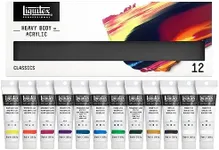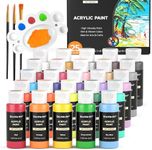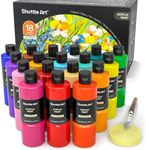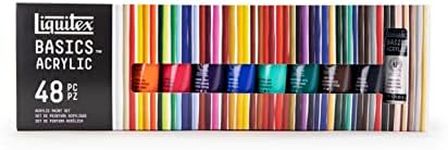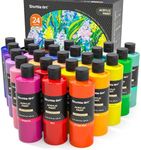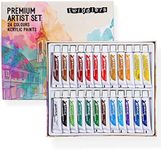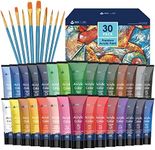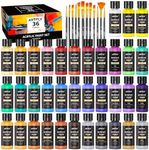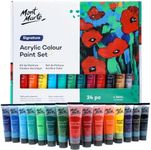Buying Guide for the Best Acrylic Paint Sets
Choosing the right acrylic paint set can greatly enhance your painting experience and the quality of your artwork. Acrylic paints are versatile, fast-drying, and can be used on a variety of surfaces, making them a popular choice for artists of all levels. When selecting an acrylic paint set, consider the range of colors, the quality of the paint, and the specific needs of your projects. Understanding the key specifications will help you make an informed decision that aligns with your artistic goals.Color RangeThe color range in an acrylic paint set refers to the variety of colors included. This is important because a wider range of colors allows for more creative freedom and the ability to mix and match to achieve the desired hues. Sets can range from basic primary colors to extensive collections with dozens of shades. If you're a beginner, a set with primary colors might be sufficient as you learn to mix your own colors. For more advanced artists, a larger set with a broader spectrum of colors can save time and provide more options for complex projects.
Pigment QualityPigment quality determines the vibrancy and longevity of the paint. High-quality pigments result in more vivid colors and better coverage, which is crucial for creating striking artwork. Pigment quality is often indicated by terms like 'student grade' or 'artist grade.' Student grade paints are more affordable and suitable for practice or casual projects, while artist grade paints offer superior pigmentation and are ideal for professional work. Consider your level of expertise and the importance of color vibrancy in your work when choosing the pigment quality.
ViscosityViscosity refers to the thickness or consistency of the paint. This is important because it affects how the paint handles and the texture it can create. Acrylic paints can be heavy body, soft body, or fluid. Heavy body paints are thick and retain brushstrokes, making them ideal for impasto techniques. Soft body paints are smoother and better for detailed work or blending. Fluid acrylics are thin and suitable for glazing or watercolor-like effects. Choose the viscosity based on the techniques you plan to use and the texture you want to achieve in your artwork.
Drying TimeDrying time is the duration it takes for the paint to dry once applied. Acrylic paints are known for their fast drying time, which can be both an advantage and a challenge. Quick drying allows for rapid layering and less waiting time, but it can also make blending more difficult. Some acrylics are formulated to dry slower, giving more time for blending and adjustments. Consider your working style and whether you prefer to work quickly or need more time for blending when evaluating drying time.
LightfastnessLightfastness indicates how resistant the paint is to fading when exposed to light over time. This is crucial for ensuring the longevity of your artwork, especially if it will be displayed in well-lit areas. Paints with high lightfastness ratings will maintain their color integrity longer. If your work is intended for long-term display or sale, prioritize paints with excellent lightfastness. For practice or temporary projects, this may be less of a concern.


